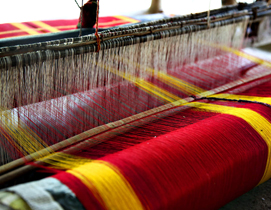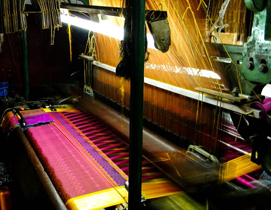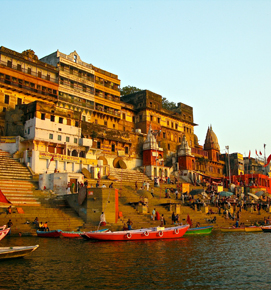About Us
About
Banarasi Vastra Udyog Association is the hub of Varanasi's textile and apparel industry. We represent artisans, weavers, traders, entrepreneurs, individuals, family business owners and enthusiasts in this sector and community. Established in 1971 our association is deeply rooted in Varanasi's history and legacy for good work and culture. For generations, our city has been renowned for its exquisite textiles, and we're committed to preserving and advancing this unique industry.
History and Cultural Legacy
The Association has got its roots and birth from the original “Banarasi Vastra Udyog Sangh” founded by prominent people of the city.
Renowned for its artistic excellence, cultural heritage, religious importance and educational traditions, Kashi continues to stand as a global beacon. Its textile industry, particularly its weaving art, is among the oldest in the world and has enjoyed global fame since antiquity.
Evolution of the Textile Industry
Initially, Banaras specialized in cotton textiles. Over time, the use of silk became prevalent, likely influenced by the British Empire’s import of cheaper cotton fabrics. The introduction of real zari and kalavattu (gold and silver threads) further elevated the craftsmanship, though their use has declined due to the rising cost of precious metals.
Ancient Mentions
Kautilya's Reference (4th Century BC): Kashi is mentioned as a major cotton textile manufacturer.
Buddhist Jataka Tales: Highlight the cotton fields of Kashi.
Patanjali’s Observations (Shunga Period, 2nd-1st Century BC): Kashi’s textiles were considered superior in quality, being more expensive and attractive than those produced elsewhere.
Mahaparinirvana Sutra: Records that the mortal remains of Lord Buddha were wrapped in a fine, smooth cotton cloth from Varanasi, with a distinctive blue tinge.
Medieval Period
Damodara Gupta (8th Century): In "Kutuni Bhaktam," he notes that Banaras’ wealthy wore clothes woven with gold threads.
Baihaki (11th Century): "Tarikh-us-Subutagin" mentions the prominence of Banarasi textiles among the items looted by the Sevans.
Mughal Era
Akbar and Shahjahan’s Reigns: References to muslin clothes used for making turbans, waistbands, and other garments.
European Travelers' Accounts: Travelers like Ralph Switch (1585-86), M. Mundy (1632), and Baptist Tavenier (1665) described Kashi’s flourishing textile industry and its global trade links.
International Trade: Iranian, Turkish, Atari, and European traders frequented Kashi, and its textiles were widely exported through major ports.
Transition and Reorganization
After some time, the association’s registration lapsed, reducing its prominence in governmental affairs. This necessitated the creation of a re-registered body, which was named the Banarasi Textile Industry Association .
The Banarasi textile industry supports around 10 lakh individuals, directly and indirectly. Despite challenges, including competition and economic fluctuations, the industry remains a cornerstone of Kashi’s cultural and economic identity.






